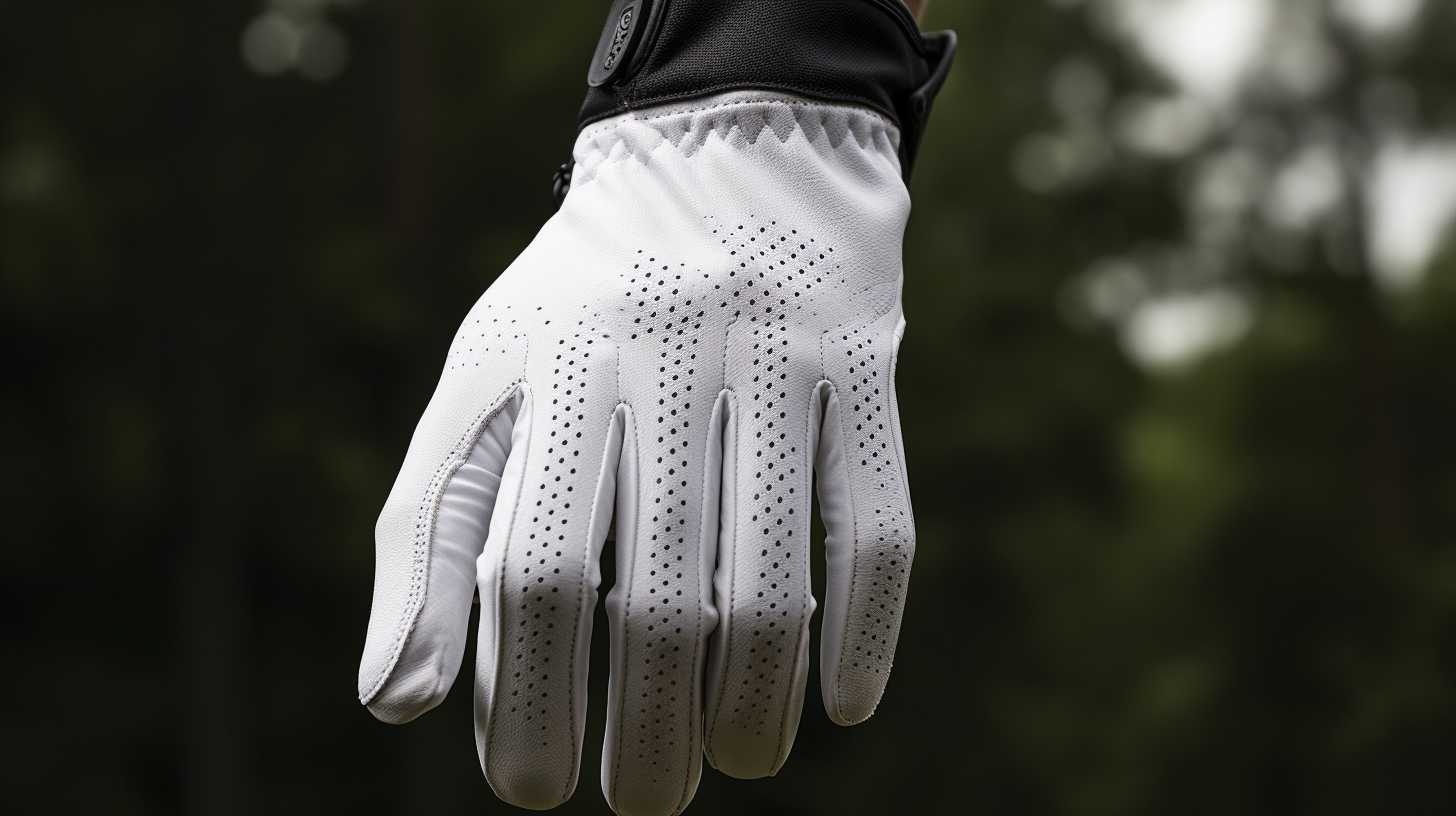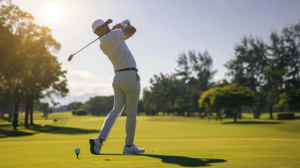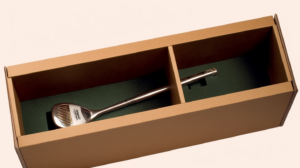Ever wondered if you’re wearing your golf glove on the correct hand?
Proper golf glove hand placement improves performance by enhancing grip and preventing blisters.
Let’s breakdown the method behind single-handed golf glove wearing and see why the dominant hand takes the glove.
What Hand Do You Wear a Golf Glove On?
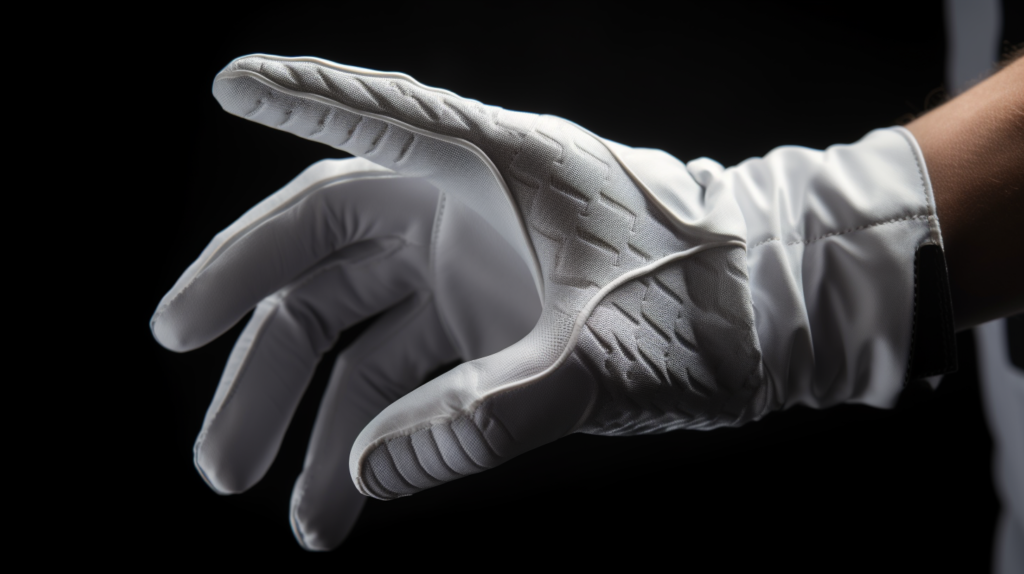
You should wear a glove on your dominant hand. Your dominant hand is the hand you write with and handle implements with on a regular basis.
For a right-handed golfer, the glove typically goes on the right hand. For a left-handed golfer, the glove goes on the left hand.
Wearing a glove on your dominant hand allows for better feel and control as you grip and swing the golf club.
The dominant hand is the one generating the most force and doing a lion’s share of the work in the golf swing, so keeping it protected and enhancing grip ability in that hand delivers maximum performance benefits.
Right-handed golfers wear the glove on their right hand because the right hand leads the swing. When swinging a club righty, the right hand starts further from the body on the grip at address.
As the swing moves to the top, the momentum of the swinging club keeps the right palm facing the target longer. This maintains proper angles.
With the right hand lower than the left, more weight and pressure goes into the right. So wearing the glove where the most friction and force take place makes logical sense.
Gloves Enhance Grip and Control
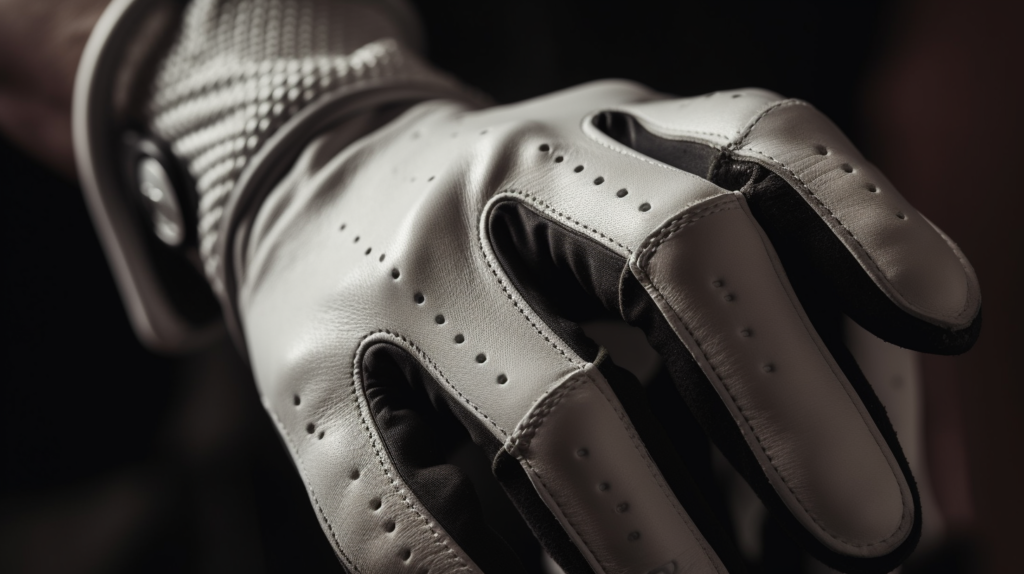
The main reason golfers wear a glove is to improve their grip on the club and overall swing control. The golf glove enhances grip and prevents slippage as you tightly grasp the club and make the athletic motion required for an accurate power swing.
The glove helps you turn the clubface with stability and apply even grip pressure for solid impact with the golf ball.
Golf gloves provide a tacky, leathery surface and fit snugly to allow your hands and equipment to work together efficiently. The glove material sticks to the grip of the golf club better than bare skin does.
This sticky friction gives the golfer a better sense of control as one unified mass moves throughout the swing. Without the glove providing enhanced traction, it is easier for your hands to twist and rearrange their positioning on the grip.
The glove combats unwanted movement between your hands and the club.
By wearing a glove on your top hand at address, you also get to maintain heightened feel and sensitivity in your bottom, trailing hand.
Rather than gloves on both hands dulling the tactile feedback golfers use to fine tune grip pressure and clubface position at impact, the bare skin of the bottom hand remains in direct contact with the equipment and relays valuable information to the swinging golfer.
Gloves Prevent Blisters and Callouses

In addition to aiding performance, golf gloves also protect the grip hand from developing painful blisters and annoying callouses during play. The repeated motion of forcibly swinging a golf club can easily cause skin damage to the hands over time as friction builds up.
Golfers who play frequently battle blisters, callouses, abrasions, and bruising.
The leather material of a golf glove creates a smooth, durable barrier over the delicate skin of the hands most vulnerable to contact injuries and wear-and-tear while golfing.
Quality golf gloves havepads built into key pressure points and reinforcements in high friction zones to make certain no stinging hot spots disrupt your round after hundreds of swings. They allow hard-core golfers to practice longer and play round after round in comfort.
Blisters form when friction ruptures layers of skin and fluid accumulates underneath. Hard layers of thick skin eventually develop into callouses when the healed skin attempts to protect damaged hot spots from further irritation.
Golf gloves allow the skin on the players grip hand to remain smooth and soft by absorbing much of this damage themselves. The gloves get worn out and tattered from use over time, while your hands avoid chronic damage.
Most Golfers Only Wear One Glove
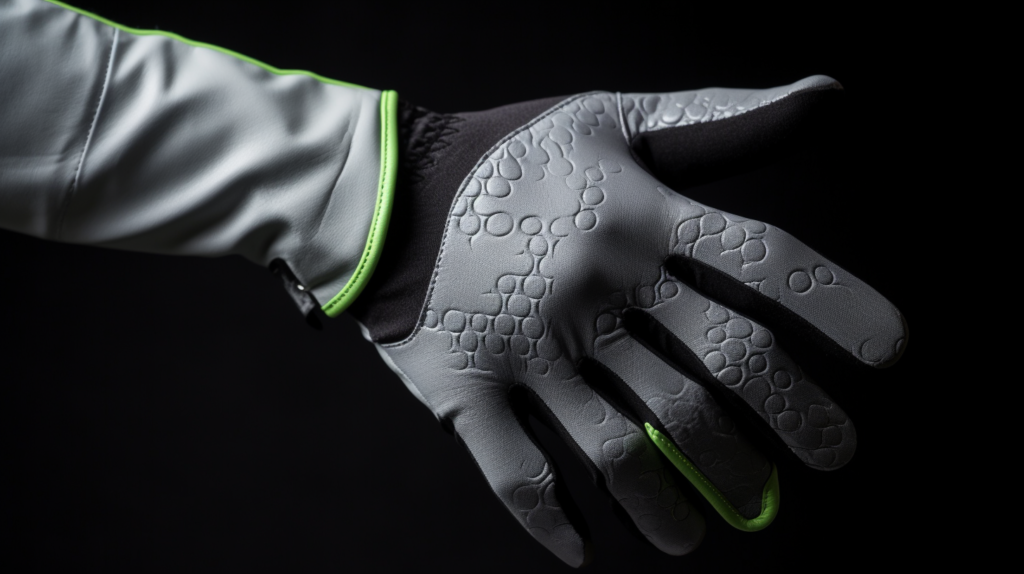
The vast majority of amateur golfers out on the course only wear one single golf glove. They wear that glove on their upper, lead hand and leave their lower hand bare.
Golf gloves are sold individually rather than in pairs because very few golfers elect to wear two. Many young touring professionals also opt to golf with just one glove protecting their grip.
Tiger Woods provides the most famous example of a professional golfer building a legendary career wearing a solo glove.
From junior amateur events through his record-setting professional major championship victories, Woods always wore the same signature Sunday red Nike golf glove on his lower right hand only.
No left hand glove found its way into his grip. Woods claimed donning two gloves made him feel too disconnected from the golf club, while the bare left hand allowed him to feel shots better.
For the average golfer not competing to win major tournaments, one well-fitted glove providing enhanced traction on the lead hand is sufficient to improve swing control.
Switching to two gloves would prove overly restrictive and uncomfortably warm during casual weekend play for most amateurs.
There is also no compelling reason to endure learning to swing effectively wearing an extra glove when the majority of professional wins occur wearing one glove.
Copying what the best golfers routinely do leads most amateurs to choose a solitarily golf glove set-up for play, leaving the bottom hand free of fabric.
The Dominant Hand Gets the Glove
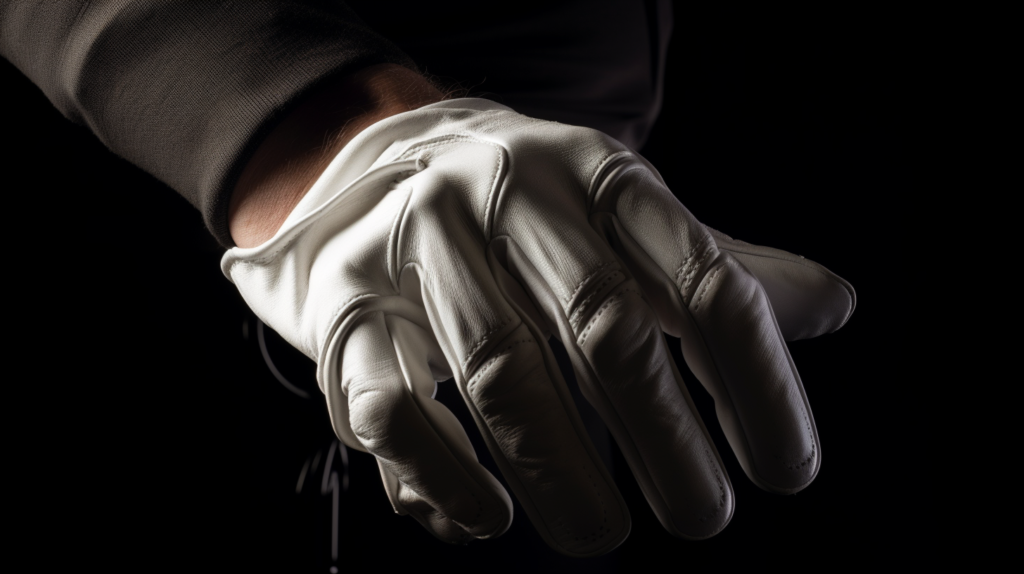
The general rule in golf is that you wear a glove on your dominant hand. Your dominant hand is the hand you write with and handle implements with on a regular basis.
For a right-handed golfer, the glove typically goes on the right hand. For a left-handed golfer, the glove goes on the left hand. Wearing a glove on your dominant hand allows for better feel and control as you grip and swing the golf club.
The dominant hand is the one generating the most force and doing a lion’s share of the work in the golf swing, so keeping it protected and enhancing grip ability in that hand delivers maximum performance benefits.
Right-handed golfers wear the glove on their right hand because the right hand leads the swing.
When swinging a club righty, the right hand starts further from the body on the grip at address. As the swing moves to the top, the momentum of the swinging club keeps the right palm facing the target longer.
This maintains proper angles.
With the right hand lower than the left, more weight and pressure goes into the right. So wearing the glove where the most friction and force take place makes logical sense.
Gloves Enhance Grip and Control
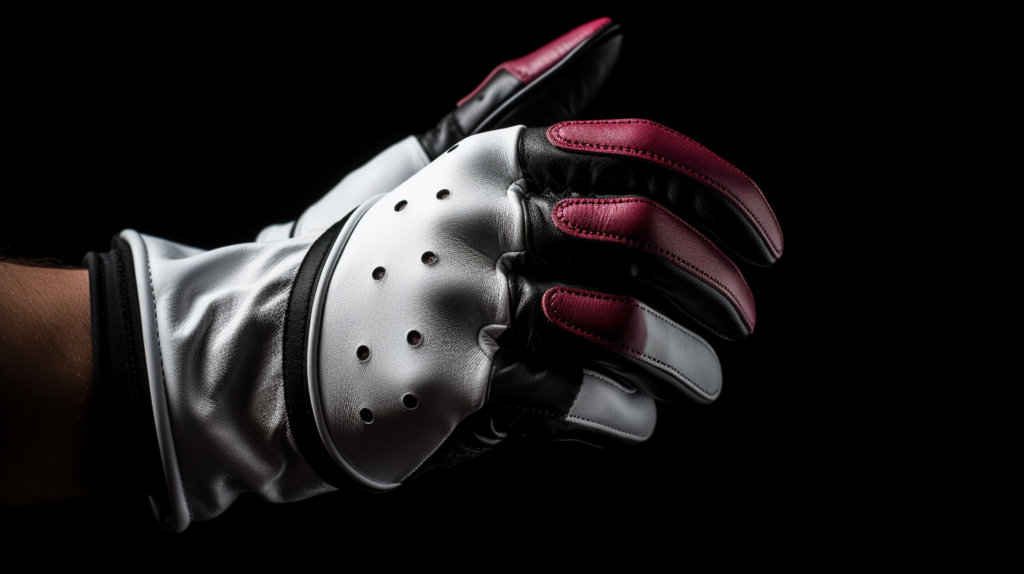
The main reason golfers wear a glove is to improve their grip on the club and overall swing control. The golf glove enhances grip and prevents slippage as you tightly grasp the club and make the athletic motion required for an accurate power swing.
The glove helps you turn the clubface with stability and apply even grip pressure for solid impact with the golf ball. Golf gloves provide a tacky, leathery surface and fit snugly to allow your hands and equipment to work together efficiently.
The glove material sticks to the grip of the golf club better than bare skin does. This sticky friction gives the golfer a better sense of control as one unified mass moves throughout the swing.
Without the glove providing enhanced traction, it is easier for your hands to twist and rearrange their positioning on the grip.
The glove combats unwanted movement between your hands and the club. By wearing a glove on your top hand at address, you also get to maintain heightened feel and sensitivity in your bottom, trailing hand.
Rather than gloves on both hands dulling the tactile feedback golfers use to fine tune grip pressure and clubface position at impact, the bare skin of the bottom hand remains in direct contact with the equipment and relays valuable information to the swinging golfer.
Gloves Prevent Blisters and Callouses
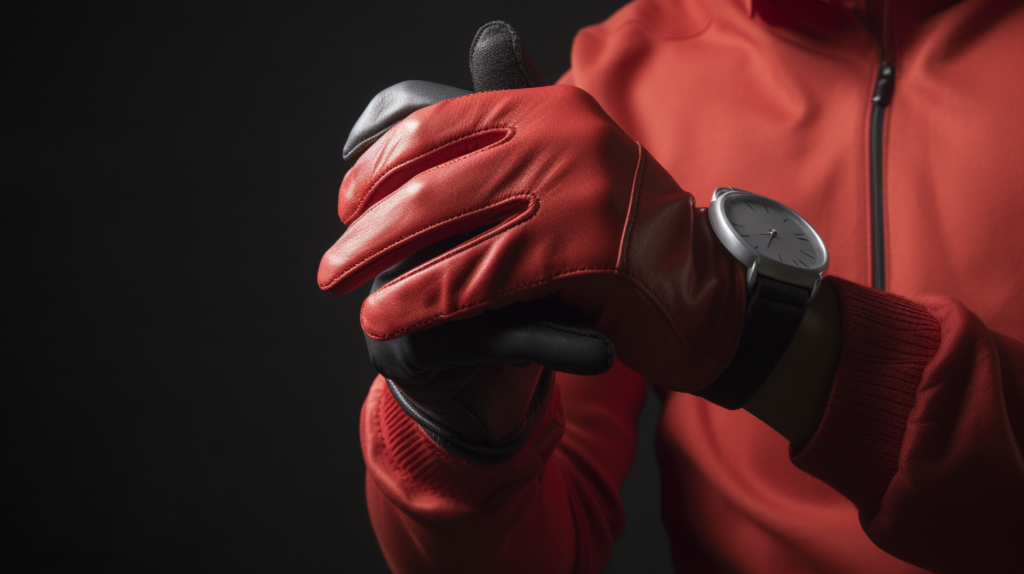
In addition to aiding performance, golf gloves also protect the grip hand from developing painful blisters and annoying callouses during play. The repeated motion of forcibly swinging a golf club can easily cause skin damage to the hands over time as friction builds up.
Golfers who play frequently battle blisters, callouses, abrasions, and bruising. The leather material of a golf glove creates a smooth, durable barrier over the delicate skin of the hands most vulnerable to contact injuries and wear-and-tear while golfing.
Quality golf gloves havepads built into key pressure points and reinforcements in high friction zones to make certain no stinging hot spots disrupt your round after hundreds of swings. They allow hard-core golfers to practice longer and play round after round in comfort.
Blisters form when friction ruptures layers of skin and fluid accumulates underneath. Hard layers of thick skin eventually develop into callouses when the healed skin attempts to protect damaged hot spots from further irritation.
Golf gloves allow the skin on the players grip hand to remain smooth and soft by absorbing much of this damage themselves. The gloves get worn out and tattered from use over time, while your hands avoid chronic damage.
Most Golfers Only Wear One Glove
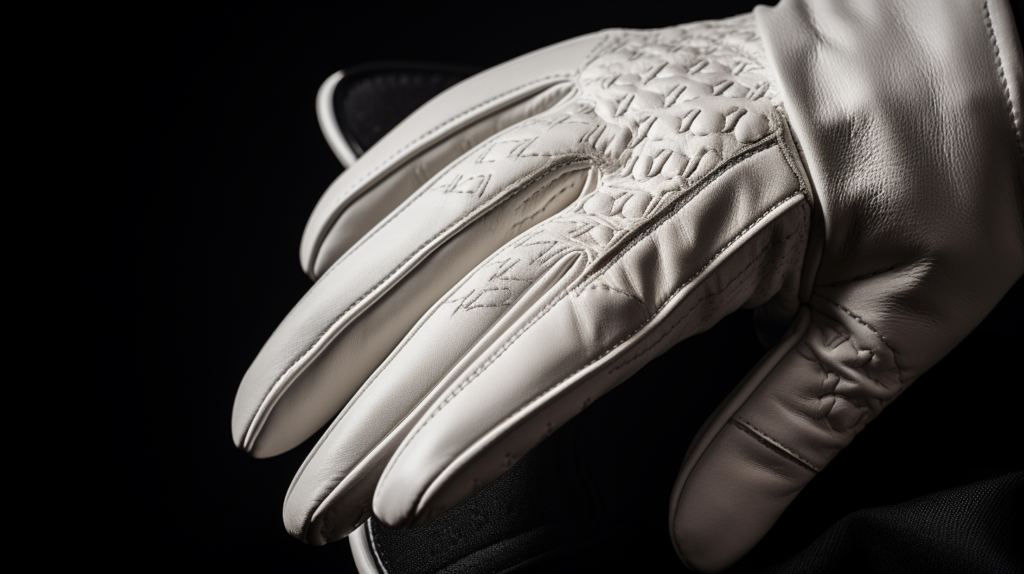
The vast majority of amateur golfers out on the course only wear one single golf glove. They wear that glove on their upper, lead hand and leave their lower hand bare.
Golf gloves are sold individually rather than in pairs because very few golfers elect to wear two.
Many young touring professionals also opt to golf with just one glove protecting their grip. Tiger Woods provides the most famous example of a professional golfer building a legendary career wearing a solo glove.
From junior amateur events through his record-setting professional major championship victories, Woods always wore the same signature Sunday red Nike golf glove on his lower right hand only. No left hand glove found its way into his grip.
Woods claimed donning two gloves made him feel too disconnected from the golf club, while the bare left hand allowed him to feel shots better.
For the average golfer not competing to win major tournaments, one well-fitted glove providing enhanced traction on the lead hand is sufficient to improve swing control.
Switching to two gloves would prove overly restrictive and uncomfortably warm during casual weekend play for most amateurs.
There is also no compelling reason to endure learning to swing effectively wearing an extra glove when the majority of professional wins occur wearing one glove.
Copying what the best golfers routinely do leads most amateurs to choose a solitarily golf glove set-up for play, leaving the bottom hand free of fabric.
The Dominant Hand Gets the Glove
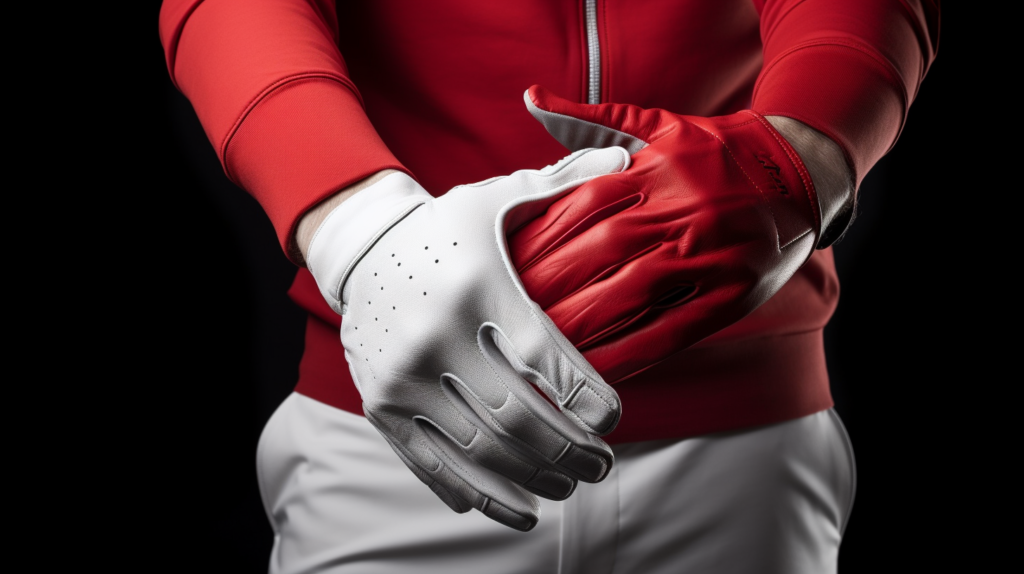
The general rule in golf is that you wear a glove on your dominant hand. Your dominant hand is the hand you write with and handle implements with on a regular basis.
For a right-handed golfer, the glove typically goes on the right hand. For a left-handed golfer, the glove goes on the left hand.
Wearing a glove on your dominant hand allows for better feel and control as you grip and swing the golf club.
The dominant hand is the one generating the most force and doing a lion’s share of the work in the golf swing, so keeping it protected and enhancing grip ability in that hand delivers maximum performance benefits.
Right-handed golfers wear the glove on their right hand because the right hand leads the swing. When swinging a club righty, the right hand starts further from the body on the grip at address.
As the swing moves to the top, the momentum of the swinging club keeps the right palm facing the target longer. This maintains proper angles.
With the right hand lower than the left, more weight and pressure goes into the right. So wearing the glove where the most friction and force take place makes logical sense.
Gloves Enhance Grip and Control
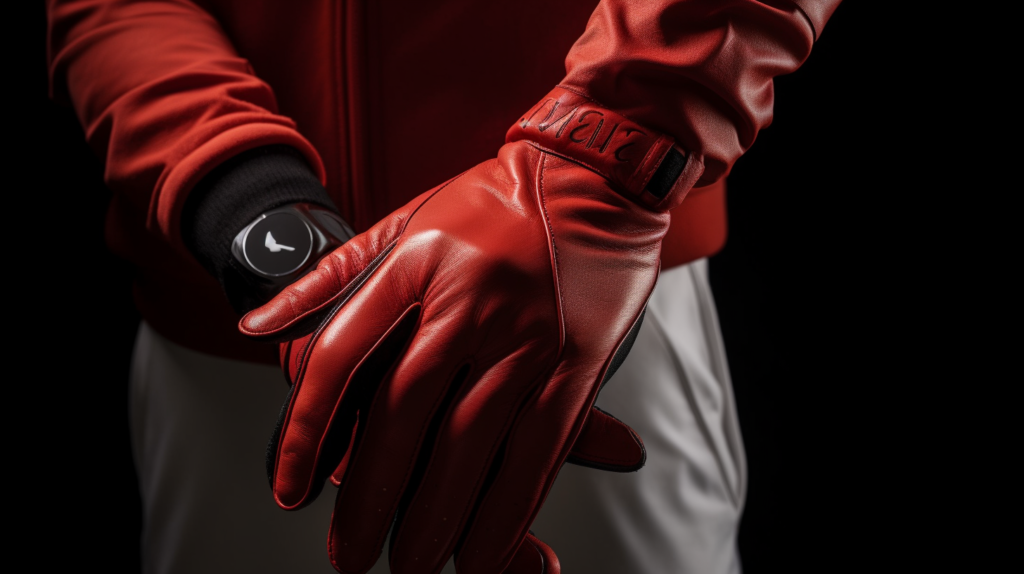
The main reason golfers wear a glove is to improve their grip on the club and overall swing control. The golf glove enhances grip and prevents slippage as you tightly grasp the club and make the athletic motion required for an accurate power swing.
The glove helps you turn the clubface with stability and apply even grip pressure for solid impact with the golf ball.
Golf gloves provide a tacky, leathery surface and fit snugly to allow your hands and equipment to work together efficiently. The glove material sticks to the grip of the golf club better than bare skin does.
This sticky friction gives the golfer a better sense of control as one unified mass moves throughout the swing.
Without the glove providing enhanced traction, it is easier for your hands to twist and rearrange their positioning on the grip. The glove combats unwanted movement between your hands and the club.
By wearing a glove on your top hand at address, you also get to maintain heightened feel and sensitivity in your bottom, trailing hand.
Rather than gloves on both hands dulling the tactile feedback golfers use to fine tune grip pressure and clubface position at impact, the bare skin of the bottom hand remains in direct contact with the equipment and relays valuable information to the swinging golfer.
Gloves Prevent Blisters and Callouses
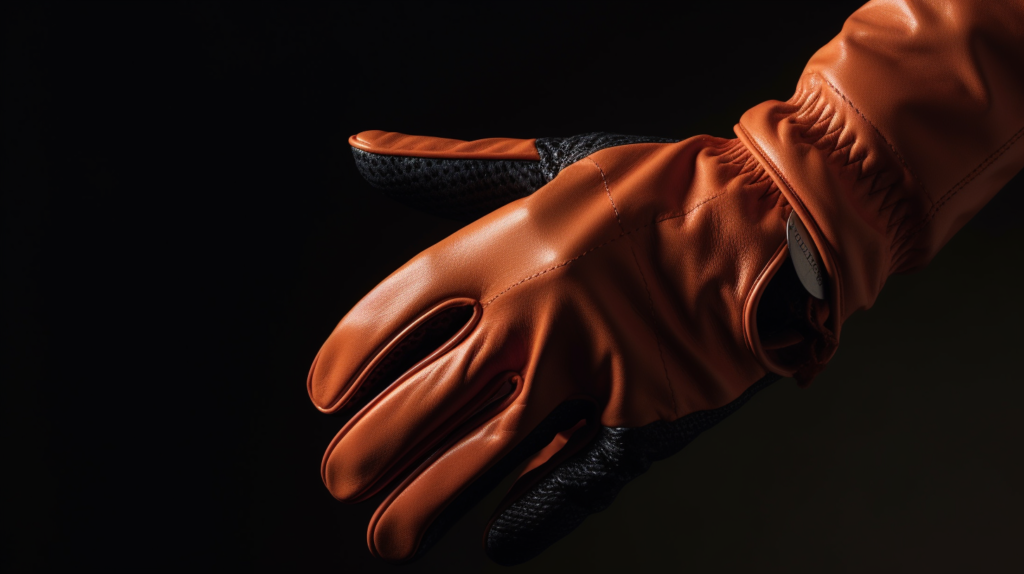
In addition to aiding performance, golf gloves also protect the grip hand from developing painful blisters and annoying callouses during play. The repeated motion of forcibly swinging a golf club can easily cause skin damage to the hands over time as friction builds up.
Golfers who play frequently battle blisters, callouses, abrasions, and bruising.
The leather material of a golf glove creates a smooth, durable barrier over the delicate skin of the hands most vulnerable to contact injuries and wear-and-tear while golfing.
Quality golf gloves have pads built into key pressure points and reinforcements in high friction zones to make certain no stinging hot spots disrupt your round after hundreds of swings. They allow hard-core golfers to practice longer and play round after round in comfort.
Blisters form when friction ruptures layers of skin and fluid accumulates underneath. Hard layers of thick skin eventually develop into callouses when the healed skin attempts to protect damaged hot spots from further irritation.
Golf gloves allow the skin on the players grip hand to remain smooth and soft by absorbing much of this damage themselves. The gloves get worn out and tattered from use over time, while your hands avoid chronic damage.
Most Golfers Only Wear One Glove

The vast majority of amateur golfers out on the course only wear one single golf glove. They wear that glove on their upper, lead hand and leave their lower hand bare. Golf gloves are sold individually rather than in pairs because very few golfers elect to wear two.
Many young touring professionals also opt to golf with just one glove protecting their grip.
Tiger Woods provides the most famous example of a professional golfer building a legendary career wearing a solo glove.
From junior amateur events through his record-setting professional major championship victories, Woods always wore the same signature Sunday red Nike golf glove on his lower right hand only. No left hand glove found its way into his grip.
Woods claimed donning two gloves made him feel too disconnected from the golf club, while the bare left hand allowed him to feel shots better.
For the average golfer not competing to win major tournaments, one well-fitted glove providing enhanced traction on the lead hand is sufficient to improve swing control.
Switching to two gloves would prove overly restrictive and uncomfortably warm during casual weekend play for most amateurs.
There is also no compelling reason to endure learning to swing effectively wearing an extra glove when the majority of professional wins occur wearing one glove.
Copying what the best golfers routinely do leads most amateurs to choose a solitarily golf glove set-up for play, leaving the bottom hand free of fabric.
Conclusion
Wearing a golf glove enhances grip, control, and protects against hand injury so you can play your best golf. Following the standard practice of golf pros by wearing a solo glove on your lead hand optimizes connection and feel.
Keep your lower hand bare and let the glove hand do the hard swing work as you master your grip pressure, smash drives, and sink more putts.
